Both the 3070 Ti and the 3080 enjoy a huge fan following in the gaming community and while they’re in different classes, buying either one of these cards would translate to hours and hours of happy gaming sessions. But the main question here is — which of these two cards offers better value for money? In a GeForce RTX 3070 Ti vs 3080 battle, which card makes more sense to purchase? Profiteers have shaken up the GPU market and all buyers want maximum satisfaction for each dollar they spend on an Nvidia card, which is why we’ve written this RTX 3070Ti vs 3080 comparison to help you make a decision!
3070 Ti vs 3080 – Quick Comparison
The RTX 3080 is what one could call a game-changer (pun intended) because, with its launch, it made 4K gaming accessible to many thanks to its price tag. Not to say it’s inexpensive in any way, as there are far cheaper cards available, but it is half the price of its predecessor, the 2080 Ti, while offering a performance boost of almost 80% over the RTX 2080. Two years after its launch, it’s still the GPU that many gamers dream of!
The RTX 3070 Ti was launched as a follow-up to the incredible RTX 3070, and we say incredible because it offered (and still does!) the best value for money for an Nvidia card if you’re looking to breeze through 1440p gaming. Nvidia took the 3070 and bumped up the CUDA cores, the tensor cores, the texture mapping units, and ray-tracing units, and voila, you got the 3070 Ti. But how much better is it than the 3070? Only one way to find out — read our in-depth comparison of the 3070 against the 3070 Ti! And for the record, the 3070 Ti also does a decent job of 4K gaming, but nowhere in the league of the RTX 3080.
With our introductions out of the way, let’s look at the specs of these stellar cards, side by side.
| Features | RTX 3070 Ti | RTX 3080 |
|---|---|---|
| GPU | GA104-400-A1 | GA102-200-KD-A1 |
| CUDA cores | 6,144 | 8,704 |
| Tensor cores | 192 | 272 |
| RT cores | 48 | 68 |
| Interface | PCIe 4.0 | PCIe 4.0 |
| Memory | 8GB GDDR6X | 10GB GDDR6X |
| Memory speed | 1188 MHz | 1188 MHz |
| Bandwidth | 608GBps | 760GBps |
| Memory bus | 256-bit | 320-bit |
| Base clock | 1575 MHz | 1440 MHz |
| Boost clock | 1770 MHz | 1710 MHz |
| TDP | 290W | 320W |
Now, on to the pros and cons of the GeForce RTX 3070 Ti against the 3080.
GeForce RTX 3070 Ti
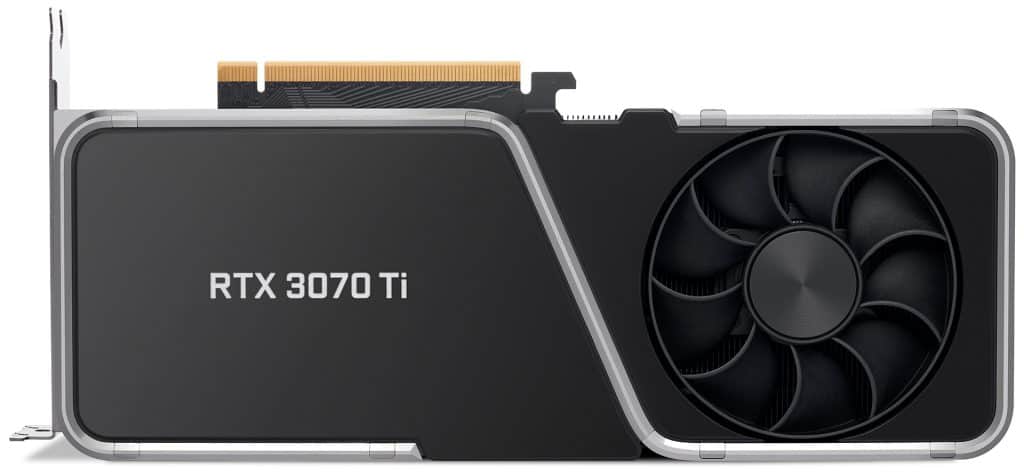
Pros
- More affordable than the 3080
- While it is best for 1440p gaming, it can still handle 4K gaming decently
- Best-in-class DLSS and ray-tracing
Cons
- Offers only marginal improvement in performance for a $100 price difference from the 3070
- Limited to 8GB of RAM
- Offers very little performance improvement over the cheaper 3070
GeForce RTX 3080
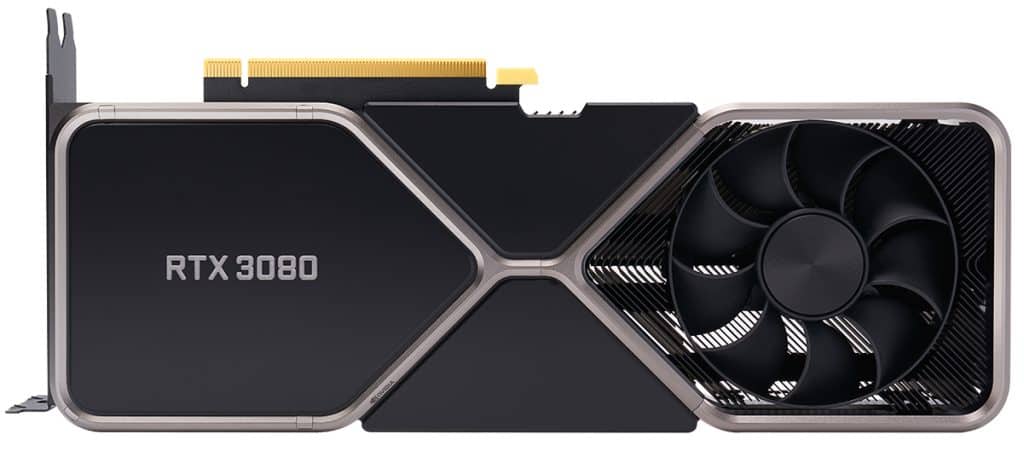
Pros
- Is incredible for 4K and 60+ FPS (frames per sec) gaming
- Is just about $100 more expensive than the 3070 Ti, going by MSRP
- Much more powerful and half the price of predecessors
- Very impressive cooling capabilities
- Is 8K-ready
- Equipped with features like G-SYNC 360, Broadcast, RTX-IO, and Reflex
Cons
- Popularity with crypto miners has made the card difficult to purchase at MSRP
- Limited to 10GB of VRAM
- Can get noisy under high load
- Constantly running in power limit
Key Specifications
Architecture
At the heart of the 3070 Ti sits the GA104 GPU, whereas, in the case of the RTX 3080, it’s the GA102 GPU. Both the chips are built of Nvidia’s shiny new Ampere architecture (it’s two years old but still new in the grand scheme of things). Both GPUs are packed to the brim with CUDA (Compute Unified Device Architecture) cores, Tensor cores, and RT (ray-tracing) cores.
Both GPUs are fabricated using Samsung’s 8nm 8N NVIDIA Custom Process. The GA102 GPU includes 28.3 billion transistors with a die size of 628.4 mm2, while the 3070 Ti holds 17.4 billion transistors at a die size of 392mm2. Based on the same architecture, this round is a tie for both cards.
Clock Speeds & Overclocking
The 3070 Ti runs a base clock of 1575 MHz which can be boosted all the way up to 1770 Mhz. As for the 3080, it clocks 1440 MHz at base and officially can be boosted up to 1710 MHz, but users have been successful at getting it to run in the 1900s, sustained. We don’t recommend that because chips that run faster also run hotter! But thankfully, there are multiple safety mechanisms built into cards today to prevent overclocking experiments from causing any permanent damage.
| RTX 3070 Ti | Boost Clock | RTX 3080 | Boost Clock |
|---|---|---|---|
| ZOTAC RTX 3070 Ti AMP Extreme Holo | 1,890 MHz | ASUS ROG STRIX RTX 3080 GAMING OC | 1,905 MHz |
| GIGABYTE AORUS RTX 3070 Ti MASTER | 1,875 MHz | ASUS ROG STRIX RTX 3080 GUNDAM | 1,905 MHz |
| Colorful iGame RTX 3070 Ti Vulcan OC | 1,860 MHz | ASUS ROG STRIX RTX 3080 V2 GAMING OC | 1,905 MHz |
| EVGA RTX 3070 Ti FTW3 ULTRA | 1,860 MHz | Colorful iGame RTX 3080 Vulcan X OC | 1,905 MHz |
| GALAX RTX 3070 Ti HOF Pro | 1,860 MHz | GIGABYTE AORUS RTX 3080 XTREME | 1,905 MHz |
As you can see, the clock speeds are higher on the 3070 Ti, but does that automatically mean that it crushes the 3080? Not at all, as GPU output is based on a lot of other things. But since this round is about overclocking stats, we had to give this one to the 3070 Ti!
User tests confirm these results. See for yourself in our graph below.
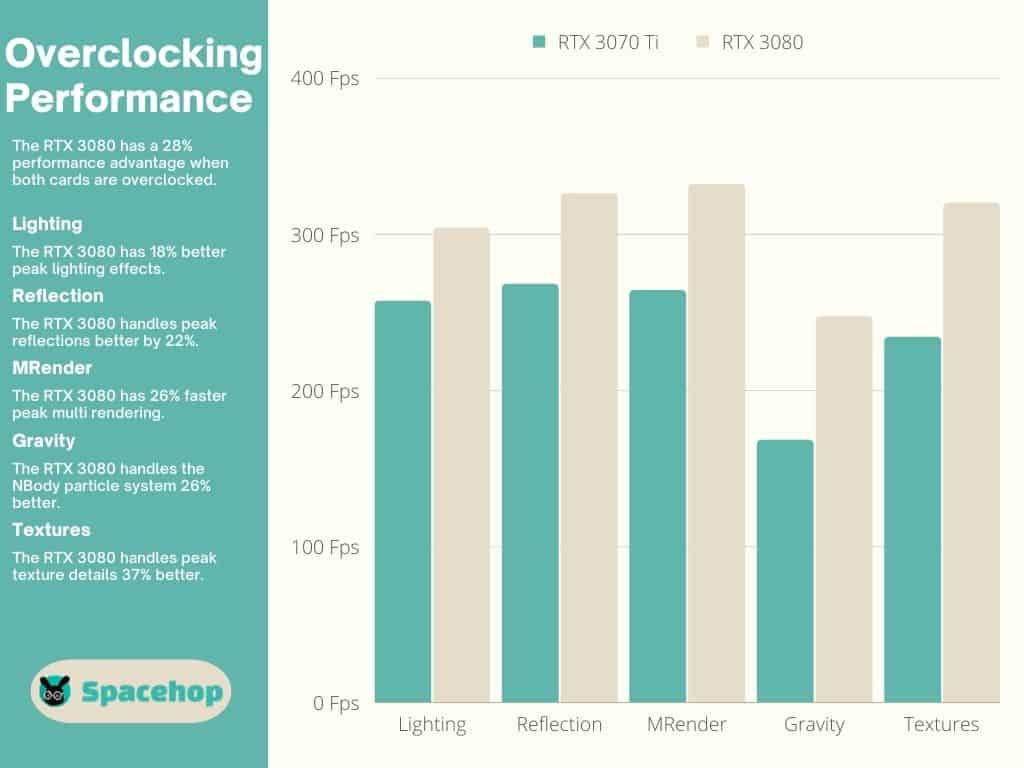
Cores
The 3070 Ti and the 3080 may be based on the same architecture, but there is a pretty huge difference when you take a closer look. The 3080 has a much larger number of CUDA cores, Tensor cores, RT cores, and texture mapping units.
CUDA (Compute Unified Device Architecture) is a programming language that Nvidia has developed to use cores more efficiently while tackling gaming duties, and the number of cores is translated directly to processing power. The 3080 boasts 8,704 CUDA cores compared to the 3070 Ti’s 6,144 CUDA cores.
As numbers do not lie, this round is an easy win for the 3080.
VRAM & Memory Specs
VRAM or video RAM is the RAM that your GPU contains and helps it quickly load games into its cache. The difference in VRAM is significant between the 3080 and 3070 Ti — the 3080 packs 10GB of the GDDR6X variety, whereas the 3070 Ti packs 6GB of GDDR6X. The memory interface on both these cards differs as well, as the 320-bit memory bus of the 3080 once again bests the 3070 Ti’s 256-bit memory bus.
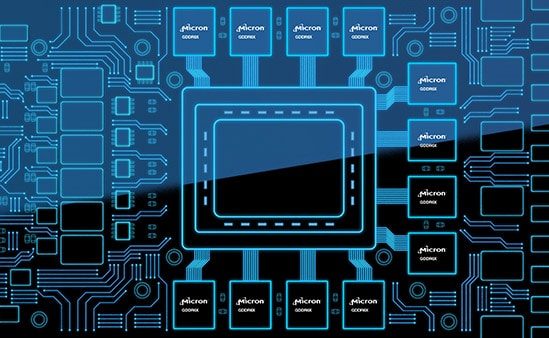
The memory bus bandwidth basically tells you how much data the interface can transfer per clock cycle, and in this scenario, you get 760GBps from the RTX 3080, whereas the 3070 Ti offers 608GBps. As for memory speed, these cards are tied at 1188 MHz. But this round is not a tie, as the 3080 wins it easily!
Shaders, RT Cores, and TMUs
Your CUDA cores or shaders play a critical role in the performance of your gaming sessions, and Nvidia has packed 8704 CUDA cores into the 3080 and 6144 of them into the 3070 Ti. On the other hand, Tensor cores are responsible for the AI and machine learning that has made DLSS (Deep Learning Super Sampling) a hit with gamers, and here too, the 3080 takes the lead as it packs 272 Tensor cores, whereas the 3070 Ti has 192 Tensor cores.
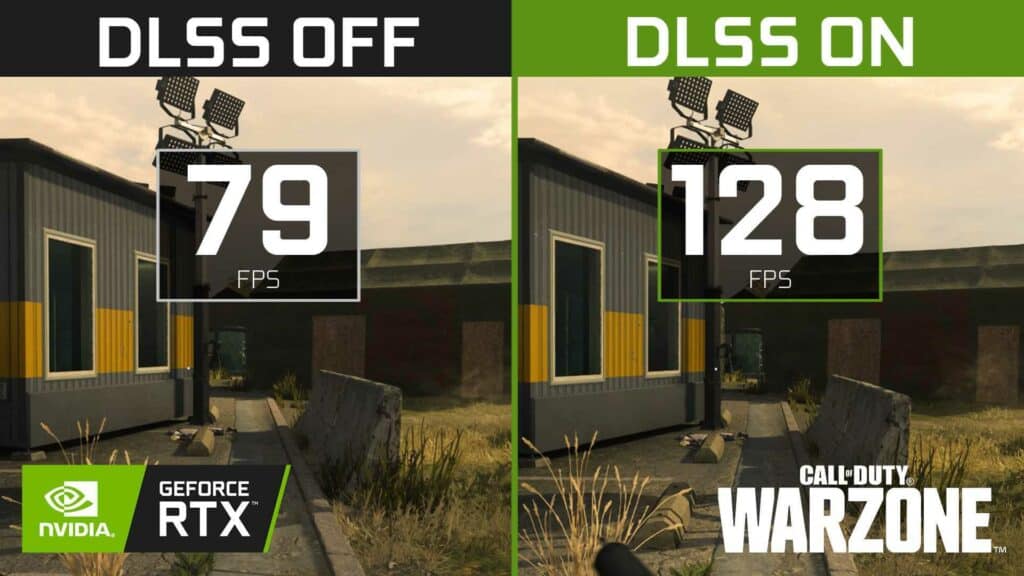
It’s a similar story with texture mapping units, which perform the role of texture sampling and adding textures to the 3D models that you see in gaming. The 3080 packs 272 of them compared to the 192 inside the 3070 Ti. As for ray-tracing or RT cores, which are responsible for all the lighting magic that happens during gaming, the 3080 has 68 RT cores compared to the 3070 Ti’s 48.
That’s a wrap for this round because the 3080 absolutely dominates the 3070 TI.
Performance / Resolutions
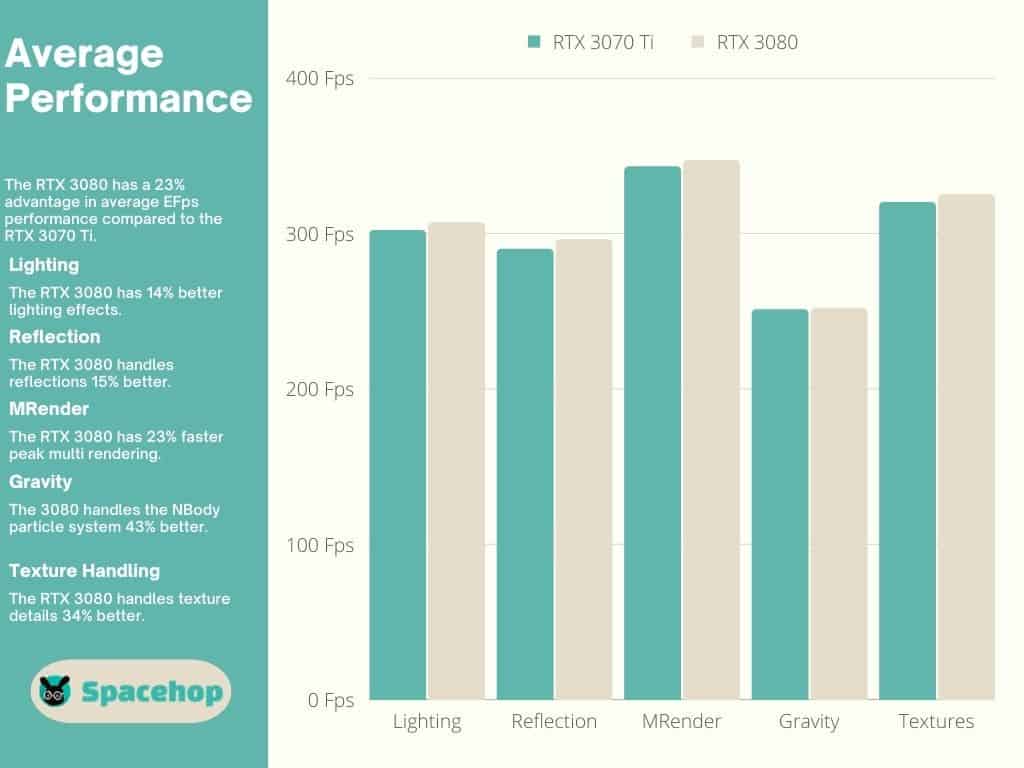
As we mentioned at the very beginning, the 3080 is ideal for those looking to enjoy 4K gaming, whereas the 3070 Ti is a beast at tackling 1440p gaming. The 3070 Ti can take on 4K gaming, but you do notice a dip in framerates with some games. And that is not at all the case with the RTX 3080, which is a 4K monster which comfortably delivers 60 fps and more in demanding AAA games.
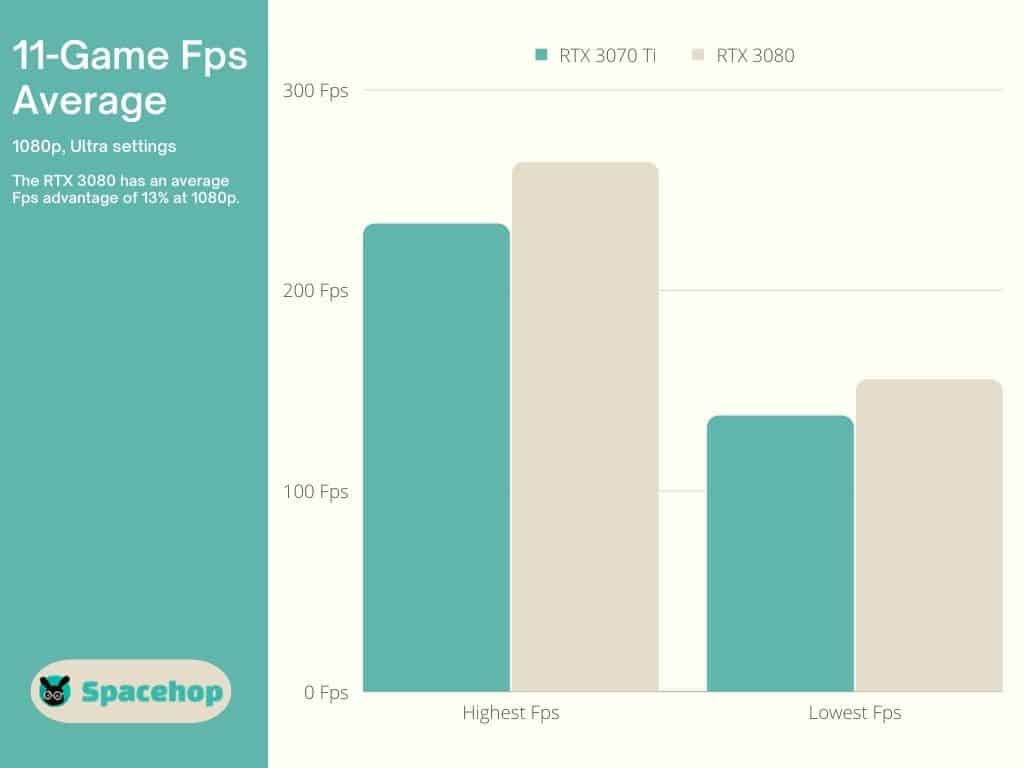
The RTX 3080 outperforms the 3070 Ti by 13% at 1080p.
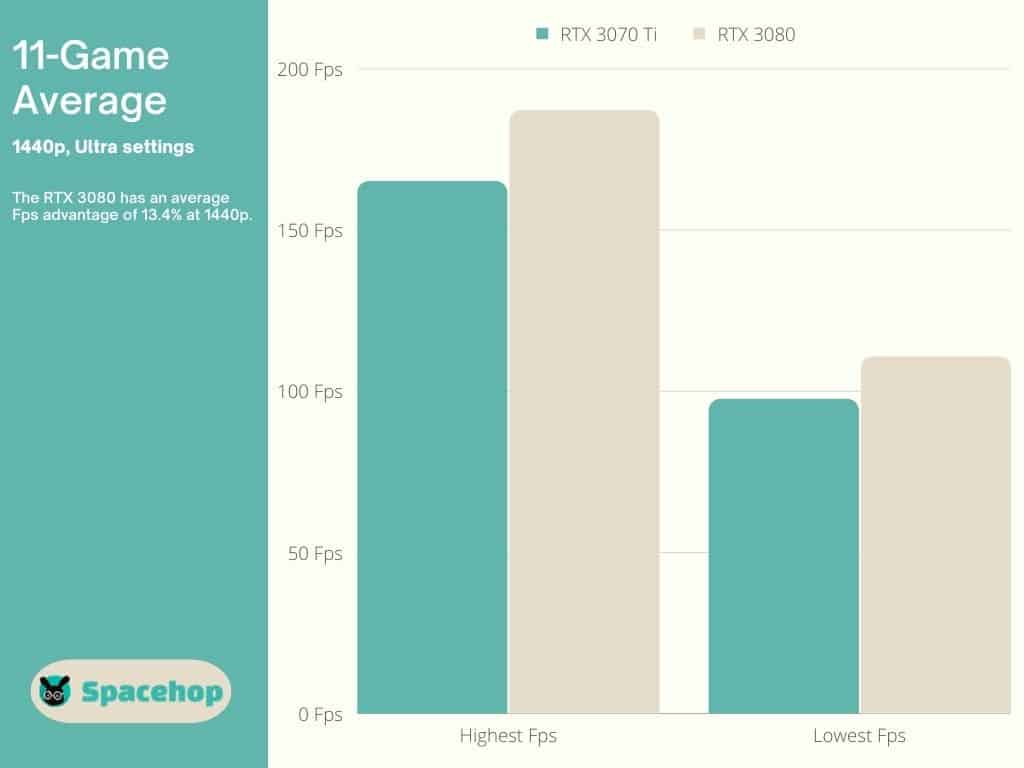
The RTX 3080 continues to outperform the 3070 Ti at 1440p, raising the difference to 13.4%.
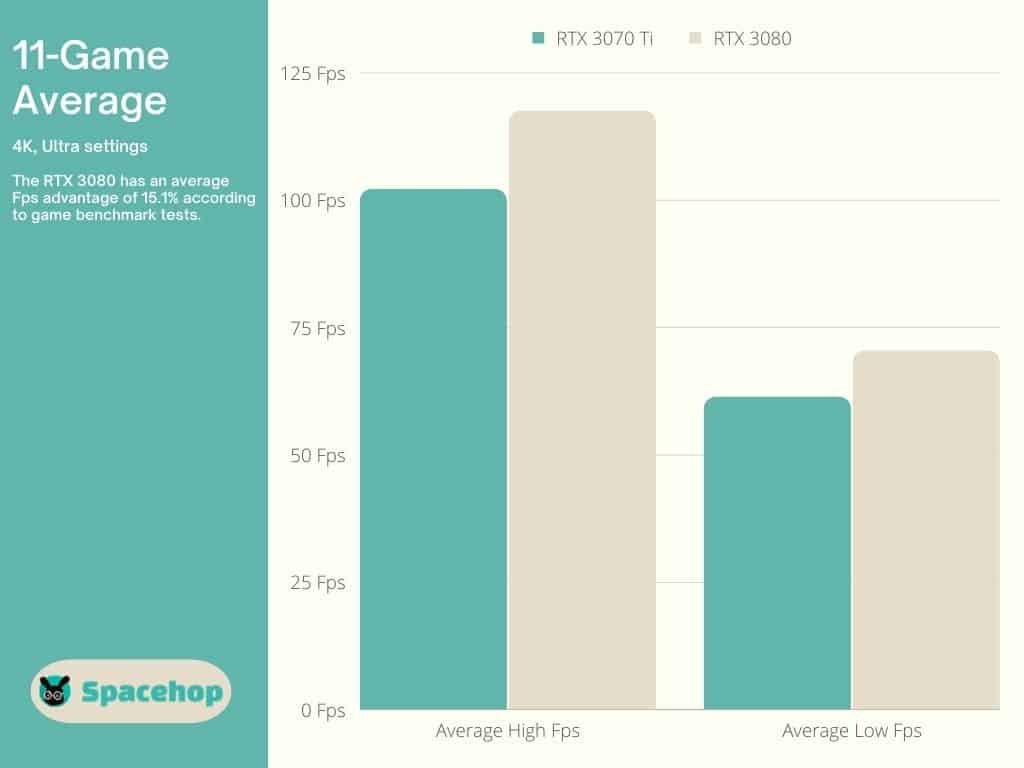
The difference is most notable at 4K, where the RTX 3080 beats the 3070 Ti by 15%.
That said, at different resolutions, both cards tackle any game you throw at it with relative ease. These cards ace benchmarks in a similar fashion, and if you’ve upgraded from an older card, nothing will wipe the smile off your face for at least a whole day! With the 3080, you can max out your settings on any game, and the card will comfortably keep up — and that’s why we gave this round to the RTX 3080.
Also, this is a great time to recommend an article we wrote about the best monitors for the RTX 3080 Ti and RTX 3070 Ti!
Connectivity
In terms of connectivity, it’s a tie for both these cards as the 3070 Ti and 3080 both offer a single HDMI 2.1 output and three DisplayPort 1.4a outs. Nvidia clearly doesn’t care much for displays with Type-C ports as neither one of these cards has a USB Type-C output. Note that you can’t link either of these cards using Nvidia’s SLI or NVLINK technology, as from the RTX 30 series, only the 3090 supports it. This round is a draw!
TDP
The TDP (thermal design power) value for the 3070 Ti is 290W whereas it is 320W for the RTX 3080. But what does this mean? The TDP is essentially the total power used by a card, but what the values tell us is this — the higher the TDP value goes, the card will need better cooling, requires a more powerful PSU, and there is an increased chance of it being noisy. And of course, the power consumption will be higher. As you can see from the digits above, the 3080 consumes more power than the 3070 Ti, giving this round to the RTX 3070 Ti.
3080 vs 3070 Ti – Standout Features
All said and done, and we’re sure it’s abundantly clear how much we love the RTX 3080, we also feel that buying this can be overkill for any gamer unless they want an exclusive 4K gaming rig. A 1440p gaming rig is still considered excellent these days and most game developers keep this in mind while creating games, so there’s no pressing need to shell out your precious savings on a 4K GPU like the RTX 3080. A 3070 Ti should handle your needs with ease!
But if you do want to spoil yourself, it’s a no-brainer to dive straight in and get your hands on the RTX 3080. You will also need to find a good CPU, invest in cooling solutions (if you plan to go crazy with overclocking), a 4K monitor with impressive refresh rates, and of course, an upgraded power supply unit.
If you need a video to see how the games look, here’s a great video we found of 8 different games being tested on the 3070 Ti and the RTX 3080:
Pricing & Availability
Let’s take a look at the MSRP on the Founders Edition variants of both these cards — the 3070 Ti is officially priced at $599 whereas the 3080 comes with a price tag of $699. But there’s almost no chance you can find either of these cards at these prices — the popularity of cryptocurrency mining and aggressive tactics by scalpers and profiteers have ensured that. Our recommendation is to keep scanning the internet for good deals from trusted sources. Here are a couple of Amazon links to give you an idea of what pricing you may be looking at.
Best price for the 3070 Ti on Amazon
Best price for the 3080 on Amazon
We’re happy that we found as close-to-MSRP prices as we possibly could, and we hope that the prices are consistent at the time that you read this article!
Conclusion
So what, at the end of this Nvidia GeForce RTX 3070 Ti vs 3080 comparison, would be our recommendation for a better GPU? After a great deal of thought, it would be the RTX 3080. And here are our main reasons — the price difference is not significant, the performance difference is massive, and with the RTX 3080, there is a certain amount of future readiness, which is always a good thing. However, if you don’t feel like spending all that much, we recommend you take a look at the RTX 3070 because that card is a powerhouse. Have any more questions about this 3070Ti vs 3080 article? Leave us a comment!